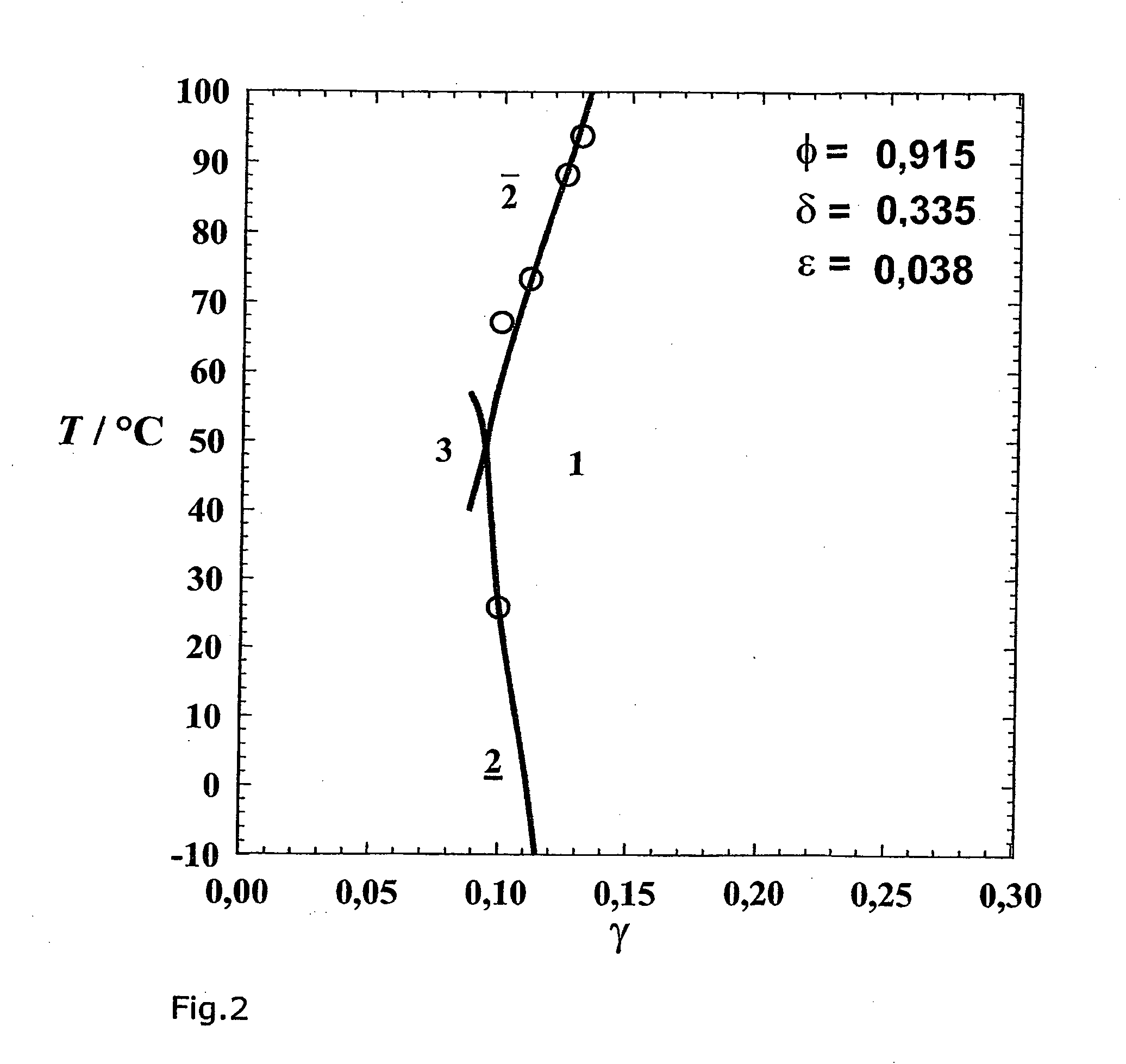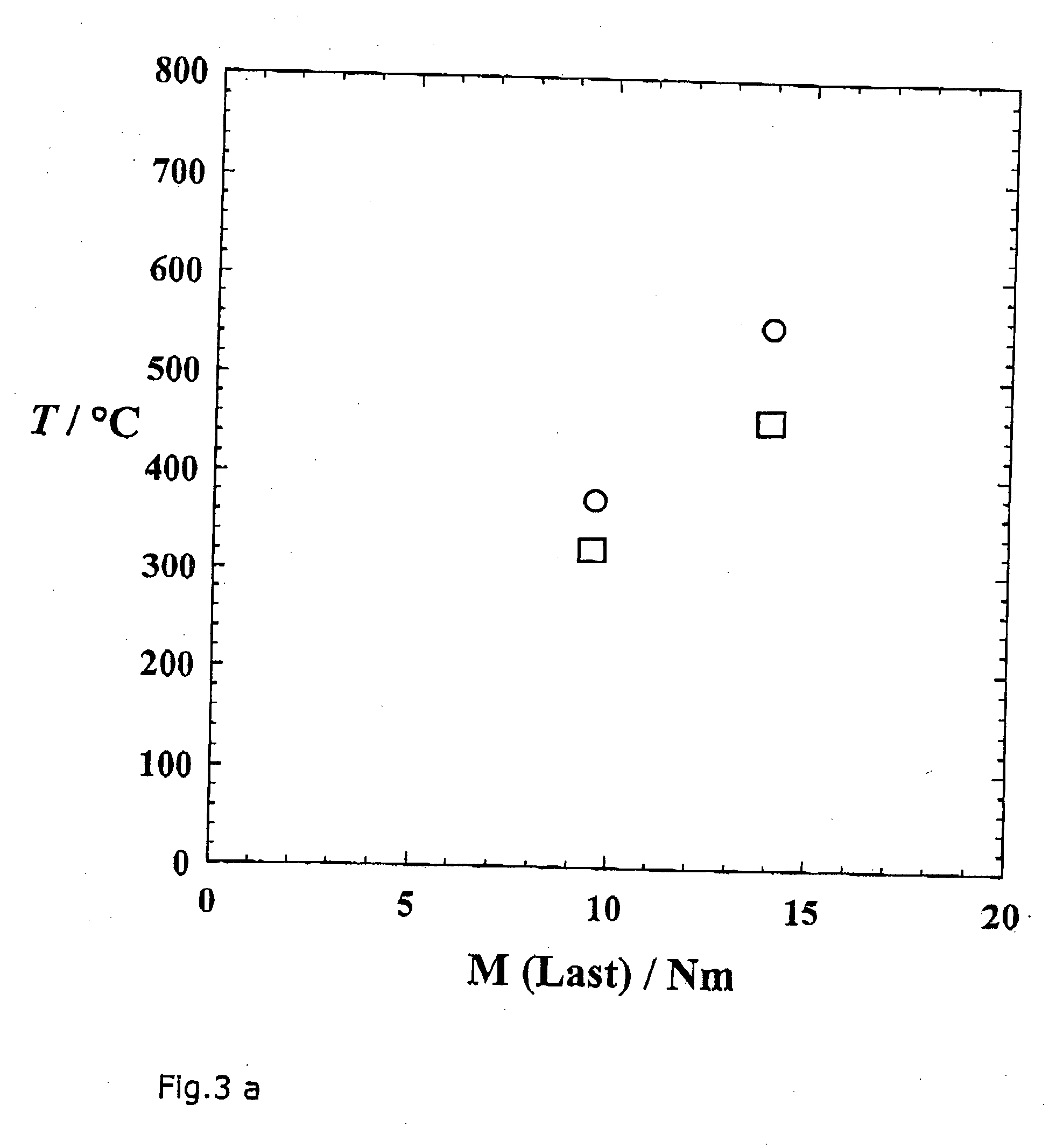Microemulsions and use thereof as a fuel
- Summary
- Abstract
- Description
- Claims
- Application Information
AI Technical Summary
Benefits of technology
Problems solved by technology
Method used
Image
Examples
example 1
Preparation of Bicontinuous Microemulsions from Components (A(+E)), (B) and (C / D)
[0160] In a first step, components (E), if required (for several components (E), each compound individually), were dissolved with stirring in fully desalted water as the first component (A). Subsequently, all further aqueous components (A), such as short-chain alcohols, glycerol etc., were mixed with the solution.
[0161] If component (B) consisted of two or more components, these were mixed homogeneously at first. Subsequently, the non-ionic surfactants (C) were added with stirring. Solid surfactants had to be dissolved completely. If necessary, the mixture had to be homogenized by applying heat up to about 60° C. with stirring. Subsequently, if required, the ionic surfactants (D) were added with stirring. Again, solid surfactants had to be dissolved completely. The mixture had to be homogenized anew.
[0162] The aqueous component (A(+E)) was added to the oil-surfactant mixture (B+C( / D)). Upon stirring ...
example 2
Composition of One-Phase Bicontinuous Microemulsions Consisting of Water, Diesel fuel, Lutensol TO5. AOT and (NH4)2CO3
[0163] Lutensol® TO5 is a C13 oxo alcohol+5 ethylene oxide moieties.
[0164] Lutensite® A-BO is the technical grade sodium salt of dioctyl sulfosuccinate (AOT), dissolved in water (concentration about 60% AOT).
K-1:Proportions in total mixture(in % by weight)PreferredComponents:Range:composition:AWater (fully desalted)15 to 2017.3BDiesel fuel70 to 7572.0CLutensol ® TO55.0 to 9.07.0[C12 / 14E5]DAOT2.0 to 4.03.0E(NH4)2CO30.6 to 0.80.7
Stable at RT
[0165]
K-2:Proportions in total mixture(in % by weight)PreferredComponents:Range:composition:AWater (fully desalted)15 to 2017.85BDiesel fuel72 to 7874.4CLutensol ® TO53.0 to 6.04.9[C12 / 14E5]DAOT1.0 to 3.02.1E(NH4)2CO30.6 to 0.90.75
Stable at RT
[0166]
K-10:Proportions in total mixture(in % by weight)PreferredComponents:Range:composition:AWater (fully desalted)4 to 128.46BDiesel fuel72 to 8679.2CLutensol ® TO56.7 to 11.08.0[C12 / 14...
example 3
Composition of Microemulsions Consisting of Water, Diesel Fuel, Lutensol TO5, Oleic Acid, Dodecylamine and Ammonium Carbonate
[0173]
K-4:Proportions in total mixture(in % by weight)PreferredComponents:Range:composition:AWater (fully desalted) 5 to 159.22BDiesel fuel80 to 9286.4CLutensol ® TO52.2 to 5.53.0[C12 / 14E5]DOleic acid0.45 to 1.1 0.6Dodecylamine0.3 to 0.80.4E(NH4)2CO30.15 to 0.6 0.38
Stable at RT
[0174]
K-5:Proportions in totalmixture (in % by weight)Components:Range:Preferred composition:AWater (fully desalted) 14 to 2418.43BDiesel fuel 70 to 8276.8CLutensol ® TO5 [C12 / 14E5] 2.2 to 5.03.0DOleic acid0.45 to 1.20.6Dodecylamine 0.3 to 1.00.4E(NH4)2CO3 0.4 to 1.20.77
Stable at RT
[0175]
K-6:Proportions in totalmixture (in % by weight)Components:Range:Preferred composition:AWater (fully desalted) 5 to 159.02BDiesel fuel 79 to 9184.8CLutensol ® TO5 [C12 / 14E5] 4.0 to 7.24.8DOleic acid 0.6 to 1.10.72Dodecylamine 0.4 to 0.80.48E(NH4)2CO30.15 to 0.60.38
Stable at 50° C.
[0176]
Summary Ex...
PUM
 Login to View More
Login to View More Abstract
Description
Claims
Application Information
 Login to View More
Login to View More - R&D
- Intellectual Property
- Life Sciences
- Materials
- Tech Scout
- Unparalleled Data Quality
- Higher Quality Content
- 60% Fewer Hallucinations
Browse by: Latest US Patents, China's latest patents, Technical Efficacy Thesaurus, Application Domain, Technology Topic, Popular Technical Reports.
© 2025 PatSnap. All rights reserved.Legal|Privacy policy|Modern Slavery Act Transparency Statement|Sitemap|About US| Contact US: help@patsnap.com



